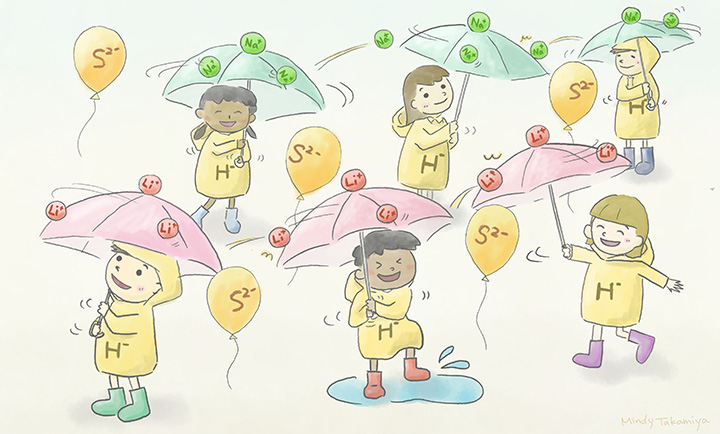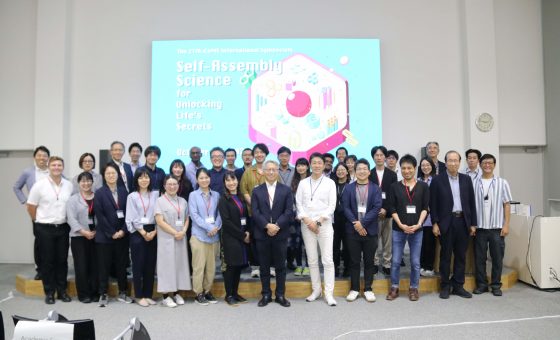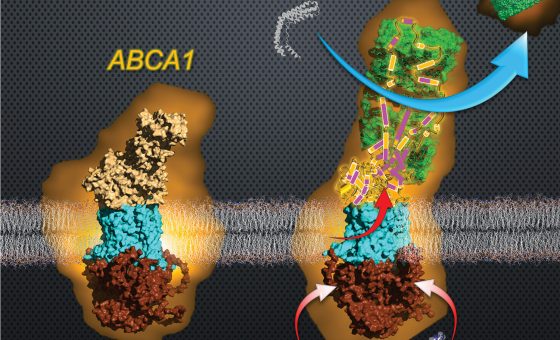iCeMS makes highly conductive antiperovskites with soft anion lattices
An atomic switch is bringing us closer to highly effective solid-state batteries for electric vehicles.

A new structural arrangement of atoms shows promise for developing safer batteries made with solid materials. Scientists at Kyoto University’s Institute for Integrated Cell-Material Sciences (iCeMS) designed a new type of ‘antiperovskite’ that could help efforts to replace the flammable organic electrolytes currently used in lithium ion batteries. Their findings were described in the journal Nature Communications.
Perovskite compounds are being tested and used in a wide range of technologies due to their excellent ability to conduct electricity, among other properties. They can be made from a large combination of atoms with the formula ABX3, where A and B are positively charged atoms and X is a negatively charged one.
Recently, scientists have been tinkering with compounds called antiperovskites. These flip the formula, combining two types of negatively charged ‘anions’ and one type of positively charged ‘cation’. They also have numerous intriguing properties, including superconductivity and , in contrast to most materials, contraction upon heating.
Lithium- and sodium-rich antiperovskites, such as Li3OCl and Na3OCl, have been attracting much attention due to their high ionic conductivity and alkali metal concentration, making them promising candidates to replace liquid electrolytes used in lithium ion batteries. “But achieving a comparable lithium ion conductivity in solid materials has been challenging,” explains iCeMS solid-state chemist Hiroshi Kageyama, who led the study.
Kageyama and his team synthesized a new family of lithium- and sodium-rich antiperovskites that begins to overcome this issue. Instead of ‘hard’ oxygen and halogen anions, their antiperovskites contain a hydrogen anion, called a hydride, and ‘soft’ chalcogen anions like sulphur.
The scientists conducted a wide range of theoretical and experimental investigations on these antiperovskites, and found that the soft anion lattice provides an ideal conduction path for lithium and sodium ions, which can be further enhanced by chemical substitutions.
The advantages of this new family of antiperovskites appear to be due, in part, to the hydride’s ability to change its size and expand its compositional space. This helps stabilize the compound’s structure. Additionally, its anomalous vibrational mode assists ionic conductivity.
“There is still much room for improvement by further experimentation with chemical substitutions,” says Kageyama. “This could eventually lead to solid-state electrolytes in all-solid-state metal-ion batteries for high performance electrical vehicles.”
Paper Information
"Hydride-based antiperovskites with soft anionic sublattices as fast alkali ionic conductors"
Authors: Shenghan Gao, Thibault Broux, Susumu Fujii, Cédric Tassel, Kentaro Yamamoto, Yao Xiao, Itaru Oikawa, Hitoshi Takamura, Hiroki Ubukata, Yuki Watanabe, Kotaro Fujii, Masatomo Yashima, Akihide Kuwabara, Yoshiharu Uchimoto and Hiroshi Kageyama







